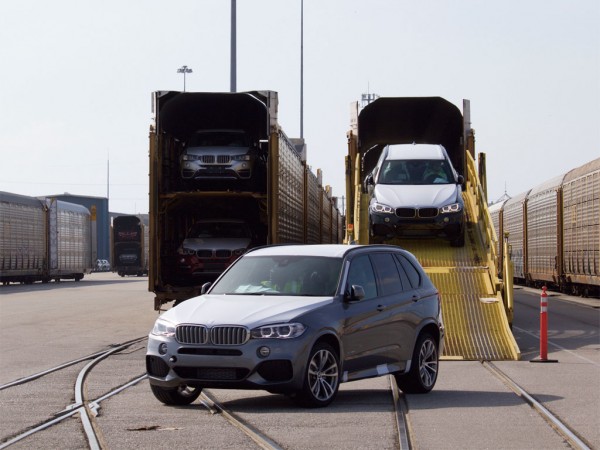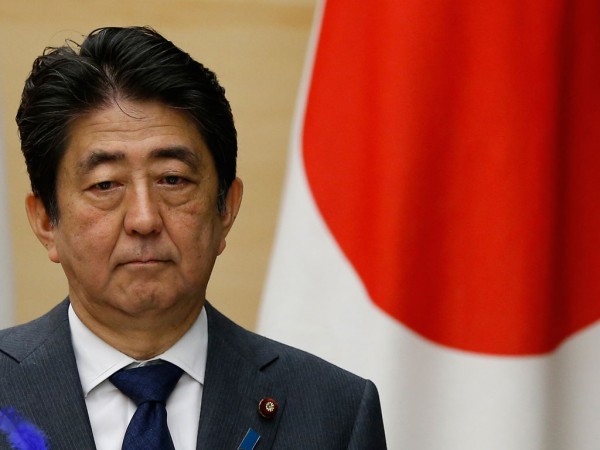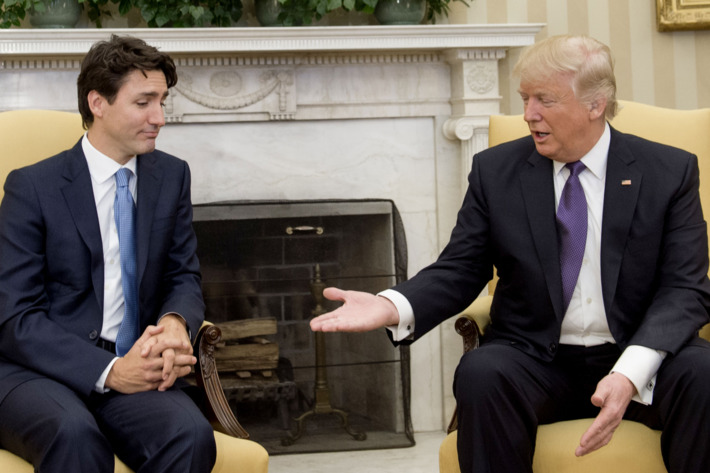There are few manufacturing sectors as international in nature as the automotive industry. And as nearly everyone knows, a trade war isn’t good for a business whose supply chains griddle the globe like a roll of yarn. But…

There are few manufacturing sectors as global in nature as the automotive industry. Equally there are few industries as sensitive to trade disputes as the auto industry. With the likelihood of a global trade conflagration growing daily, the auto industry from Hangzhou, China to Ridgeville, South Carolina and all points in between is on edge…with good reason.
In 2017, the U.S. imported around 8.27 million vehicles worth $192 billion and exported 1.98 million vehicles valued at $57 billion. From another perspective, approximately half of the U.S. domestic market is fulfilled by domestically manufactured vehicles. Thus, from a purely line item perspective, auto imports far outweigh the exports – and narrowing the trade has been on the Trump Administration’s agenda from the onset. But because of the vast complexities of the global auto industry, analysts home and abroad advised against using tariffs as a tactic to address the imbalance.
In late May, just before the June G-7 meeting in Toronto, the Trump Administration launched a Section 232 investigation into the auto industry (similar to the investigation into steel and aluminum the Administration initiated in March). If the “investigation” finds fault with auto imports the result could be a 25% tariff (up from 2.5%) on auto imports. Almost immediately Japanese Prime Minister Shinzo Abe said his government “cannot accept” the proposed tariffs. While he wasn’t alone in his protests over the proposed tariffs – there was a global outcry from auto manufacturers – Japan’s automakers are uniquely tied to the U.S. market.

Normally, the U.S. Congress is responsible for international trade relations but the seldom used Section 232 is designed to enable the executive branch (President) to intervene in trade issues where the “security” of the U.S. is threatened. In the case of motor vehicles, many foreign auto manufacturers have established production plants in the U.S. which trips up any “logic” of the security threat. In a statement published in response to the 232 investigation Toyota Motor Corp. noted that it is “hardly believable” that vehicle imports pose a national security threat to the U.S. when the company annually builds nearly 12 million vehicles in the United States.
Global Complexities
That Toyota is concerned is of no surprise, as arguably the Japanese automaker has the most exposure of any of the foreign auto builders. Toyota has ten auto manufacturing plants and 1,500 U.S. dealers and 136,000 employees in the U.S. and purposely commented that any tariffs “could hurt American jobs” and also raise costs for consumers.
But Toyota’s commentary brings us back to the point about Hangzhou, China-to-Ridgeville, South Carolina.
On June 20th, Volvo, the iconic Swedish automaker, opened its first U.S. manufacturing plant in Ridgeville (about 25 miles from Charleston), South Carolina. When the $1.1 billion, 2.3 million sq/ft facility hits full production capacity it’s expected to employ 4,000 workers and build up to 150,000 vehicles. Productions starts this fall with the S60 sedan and in 2021 will be extended to the Volvo XC90 SUV – about half of the production will be shipped to international markets. So, the Swedish automaker will be exporting around 50% of its production abroad – except it isn’t really a Swedish automaker but Swedish-Chinese automaker. Back in 2010, Hangzhou-based Chinese business man Li Shufu through his company Geely Motors acquired the floundering Volvo from Ford for $1.8 billion. Ford paid $6 billion for Volvo back in 1999.
Volvo’s vehicles, like any of those made in foreign plants in the U.S., would be excluded from the proposed 25% tariff but the exported vehicles would be subject to retaliatory tariffs. In China’s case, most vehicle import tariffs are being dropped from 25% to 15% but has indicated it would impose a 40% tariff on U.S. made imports effective July 6th. China has also said that it would allow direct ownership of auto manufacturing facilities in China – a major departure from Beijing’s previous stance – and an opening for European and Japanese automakers to get an edge on U.S. car makers.
Secondary Impacts
Volvo’s plant is far from alone in making South Carolina, and indeed the entire Southeast U.S. region, a destination for investment in auto and auto parts manufacturing.
For example, BMW is well established in Spartanburg, SC and is investing another $600 million to expand the assembly plant by 2021. The expansion will add 1,000 jobs and push the employee tally to 11,000. The State boasts 66,000 employees in the auto manufacturing sector. Over the past four years, BMW invested $1 billion to expand in anticipation of BMW X7 assembly scheduled to come online this year. And BMW has good reason to invest in Spartanburg – the facility is probably the largest single source of “U.S.” auto exports. In 2017, the Spartanburg plant exported 272,346 units in 2017 worth $8.76 billion.
Of course, South Carolina isn’t the only region of investment by foreign automakers. Recently, Toyota and Mazda announced a joint venture to build a $1.6 billion facility in Alabama which at full capacity will have an annual output of 300,000 vehicles.
The investment in auto manufacturing in South Carolina has attracted foreign investment in auto parts. For example, Osaka, Japan-based JTEKT through the subsidiary JTEKT North America, is investing $19.4 million to expand its existing Koyo Bearings production facility in West Union, South Carolina. The expansion will add 18,000 sq/ft to the existing 173,000 sq/ft plant.
Auto parts maker, Magna International, headquartered in Ontario, Canada is embarking on an $8 million, 25,000 sq/ft expansion to the Spartanburg plant that supplies seats to the BMW plant. The Canadian company has three other manufacturing sites in South Carolina employing 1,450 people.
Another secondary effect is to the surrounding ports. Recently, Charleston, South Carolina recorded a “surge” in exports and surprisingly has a near balance between imports and exports. The reason for the uptick is the export of “knock down” vehicles in ocean containers. Because foreign sales from the BMW plant in Charleston has become one of the nation’s largest export ports for finished vehicles handling 235,000 in 2017 or roughly 87% of the total volume. The remaining 13% exited via other Southeast ports in Georgia and Florida.
A NAFTA Play or More?
Although President Trump has tweeted his distaste for German luxury cars on Manhattan streets, the bigger impact would be on the auto trade within NAFTA. Indeed, it has been suggested that the entire Section 232 investigation is to push the NAFTA renegotiation. Canada’s Prime Minister Justin Trudeau said to the press just before the June G-7 meetings, “We know everything is tied to the ongoing negotiations with NAFTA.”
Trudeau’s probably right. When Commerce Secretary Wilbur Ross was questioned by the U.S. Senate on the Section 232 investigation into steel and aluminum, which involved both Mexico and Canada, he testified, “The Canadian steel industry is not being accused of directly and individually being a security threat…The national security implication is in the aggregate, all of the steel.”
And initially, Canada and Mexico were exempted from the tariffs before the NAFTA talks stalled. There is a lot at stake for all parties. Canada and Mexico account for 4.27 million vehicle imports annually – roughly half of the entire inbound total. And Canada and Mexico also account for just over 1 million vehicle exports annually.
While the concept of foreign imports implies a non-U.S. brand, 14.5% of the vehicles sold in the U.S. were “imports” of GM, Ford and Fiat Chrysler.

Further it’s unclear whether the tariffs would have the desired effect of boosting U.S. auto manufacturing and exports.
John Bozzella, president of Global Automakers, a Washington DC based trade association representing international motor vehicle manufacturers, said of the proposed tariffs, “The President’s decision to impose significant tariffs on steel and aluminum imports from the European Union and our NAFTA trading partners is disappointing and counterproductive. A tariff is a tax and this action will raise prices and hurt American auto producers and their customers. Any retaliation by our trading partners will multiply this harm and do nothing to encourage U.S. exports.”

National Taxpayers Union Federation (NTUF) put numbers to the impact of the proposed tariff. The NTUF believes the overall import taxes to triple from $33 billion to $98 million. It would also increase the average price of imported cars by $4,205 per vehicle and the average price of pickup trucks by $5,089 per vehicle. Furthermore, the price of cars assembled in the United States is expected to increase by at least $1,262 per vehicle.
It’s also difficult to gauge the impact of the Section 232 tariffs on the U.S. as retaliation from foreign trading partners takes hold. Five trading partners have already filed lawsuits against the U.S. with the WTO (World Trade Organization). And if history is any judge, the U.S. will lose as it did with President Bush’s 2001 tariff on steel and be forced to drop the tariffs or face further retaliation. It’s a trade war that almost no one really wants because no one will win.





